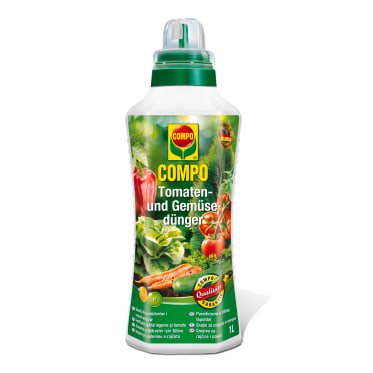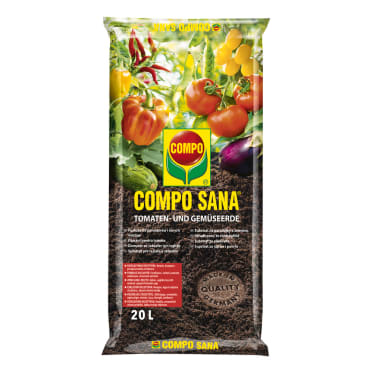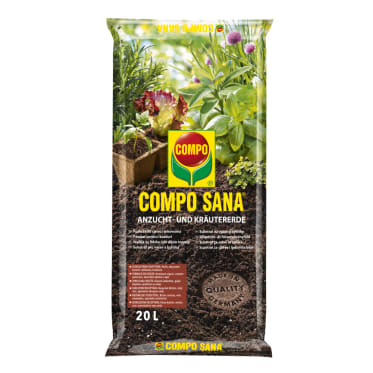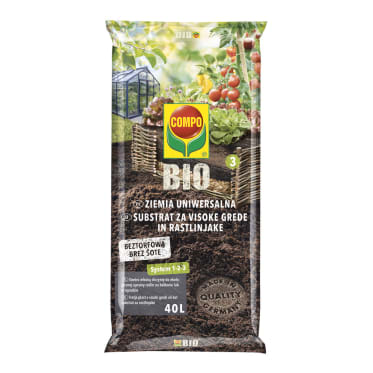Frequent search terms

- COMPO
- Guide
- Plant Care
- Herbs, fruits and vegetables
- The vegetable harvest: When the time is finally right
The highlight of the kitchen garden
The vegetable harvest is just around the corner!
You have sown, planted, fertilised, watered and nurtured. You know how it goes: Strong and healthy plants mean a rich harvest and great flavour. But when is a vegetable ripe and how do you know that it needs to be harvested? Learn all the facts about harvesting vegetables here.

Early vegetables, late vegetables and time of day
Finding the right time
When it comes to the harvest, a distinction is made between early and late vegetables. Early vegetables include kohlrabi, peas, courgettes and cucumbers. These need to be harvested in good time, as they store bitter substances which impair the flavour when they are too ripe. On the other hand, late vegetables become tastier over time, so you can harvest them later on. These mainly include root vegetables, such as carrots and radish, and cabbage varieties, such as curly kale and Brussels sprouts. Cabbage varieties don't develop their full flavour until after the first night of frost. Given the many different vegetable varieties, it is difficult to make general statements about the harvesting time. But unlike fruit, you should not harvest vegetables in the morning. Many varieties, such as salad and radish, increase their nitrate content overnight. Nitrate can be unhealthy for humans, but it is removed by light during the day. The vitamin content is also at its highest towards the end of the day.
Our COMPO harvesting tip
The best time to harvest vegetables is on sunny days, as this is when the most nitrate is removed. But herbs lose their aroma in the midday heat, meaning it is better to cut them in the morning.
When is the best time for the vegetable harvest?
Our favourite fruit vegetables
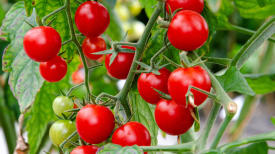
1
Tomatoes
It is relatively easy to tell how ripe a tomato is by its colour. If it is bright red, it is ready to be harvested. With yellow or orange tomato varieties, you can tell that they are ripe when the fruits yield a little when pressed and can easily be detached from the stem. Warning: Unripe green tomatoes are poisonous!
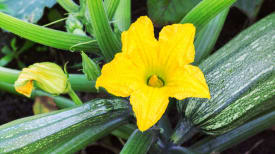
2
Cucumbers and courgettes
Cucumbers and courgettes should be harvested very quickly. On the one hand, the young crops taste better and, on the other hand, more fruits can grow until October. Use a sharp knife to harvest them and cut off cucumbers and courgettes directly at the stem. This will not damage the plant and new crops can grow more quickly.
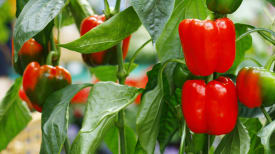
3
Peppers and chilli
Although green peppers can be harvested, they are generally unripe and contain fewer vitamins. Their bitter flavour is also not everyone's cup of tea. If the peppers are yellow, orange or red (depending on the variety), it is the right time to harvest them. Simply snap the peppers off from the plant carefully.
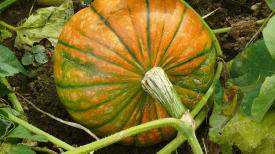
4
Pumpkin
Pumpkins are traditionally harvested between September and October, but always before the first frost. You can tell that they are ripe when the stems are lignified and the pumpkin sounds hollow when you knock on it. The brighter the colour of the pumpkin, the more vitamins it has and the better it tastes. You should not cut the stem base so that the pumpkins last and can be stored for longer.
When is the best time for the vegetable harvest?
Our favourite root vegetables
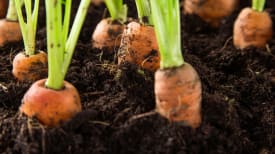
1
Carrots
Carrots often don't develop the best flavour and reach their optimal size until the end of the ripening period. Ripe carrots start to become round at the top and have a diameter of about 12 mm depending on the variety. The carrots usually poke out of the soil and the tips of the leaves start to discolour. Alternatively, you can push aside some of the soil to see how big the carrot is. Carrots are usually not dug up when harvested, but rather pulled out of the soil.

2
Potatoes
Potatoes are traditionally harvested about three months after they are planted. The best time to harvest them is when the leaves of the plant start to wilt. A garden fork is well suited to harvesting them – it is stuck into the part of the potatoes above ground. Carefully pull the potatoes out of the soil. Alternatively, individual roots can be uncovered and the potatoes can be harvested there. This allows the remaining potatoes to continue growing.
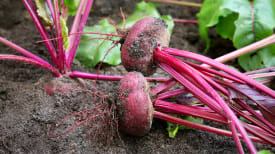
3
Beetroot
You can harvest the first large tubers three to four months after you sowed the beetroot. Young beetroot are more aromatic and have the best flavour. The longer you wait, the higher the water content. Do not wait until white rings form on the flesh.
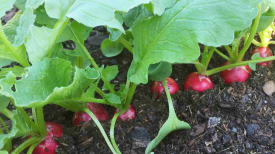
4
Radishes
Radishes grow very quickly and should not remain in the soil for longer than six weeks under any circumstances. Otherwise they lose their typical flavour, become stringy and spongy and may split. If the tubers are 2-3 cm large, you can harvest these by carefully pulling them out of the soil.
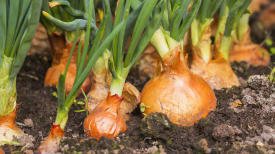
5
Onions
Onions or their leaves can be harvested three to four months after planting to be eaten straight away. Onions, which have leaves that fold by themselves, are particularly suitable for storage. They become more stable and last longer. Leave the onions on the soil for a few days after the harvest. The outer layers of the onion will dry out so that they can be stored for longer.
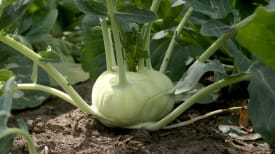
6
Kohlrabi
Kohlrabi is ready for harvesting about six to eight weeks after seeding. It should have reached about the size of a tennis ball by then. But some varieties are much larger. To harvest a kohlrabi, simply cut it off below the bulb with a knife and remove the large leaves.
When is the best time for the vegetable harvest?
Pulses, salads and the like
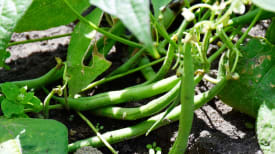
1
Beans
Beans are also ripe after a few weeks. Break one of the beans in two before harvesting: If the breakage point is green and juicy, the bean can be harvested. Pick the pulses by detaching them with your fingers. Regularly harvesting the plant stimulates it to form new flowers and bear more crops.
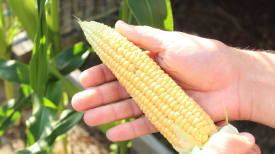
2
Sweet corn
Corn can be harvested when the silk on the ears becomes brown or black. Use the tip of a knife to carve into the corn a little. The cobs can be harvested if a milky substance comes out. If it is still clear, you should wait a bit longer before harvesting them. As with beans, corn turns sugar into starch after the harvest, so you shouldn't wait too long before cooking it.
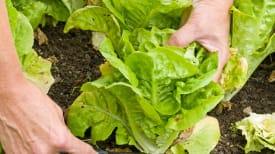
3
Salad
A distinction is generally made between lettuce and curled lettuce. For head lettuces, the whole head is harvested – it is cut with a sharp knife about 2.5 cm above the ground. Curled lettuce is harvested by continuously plucking the outer leaves.
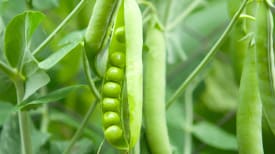
4
Peas
Peas can be harvested about three months after seeding – the younger they are, the better they taste. The taste of peas doesn't start changing until during the harvest, as the sugar they contain turns into starch. Storing peas harvested at home is therefore not recommended – it is best to cook them immediately after harvesting.
Our products for growing vegetables

















